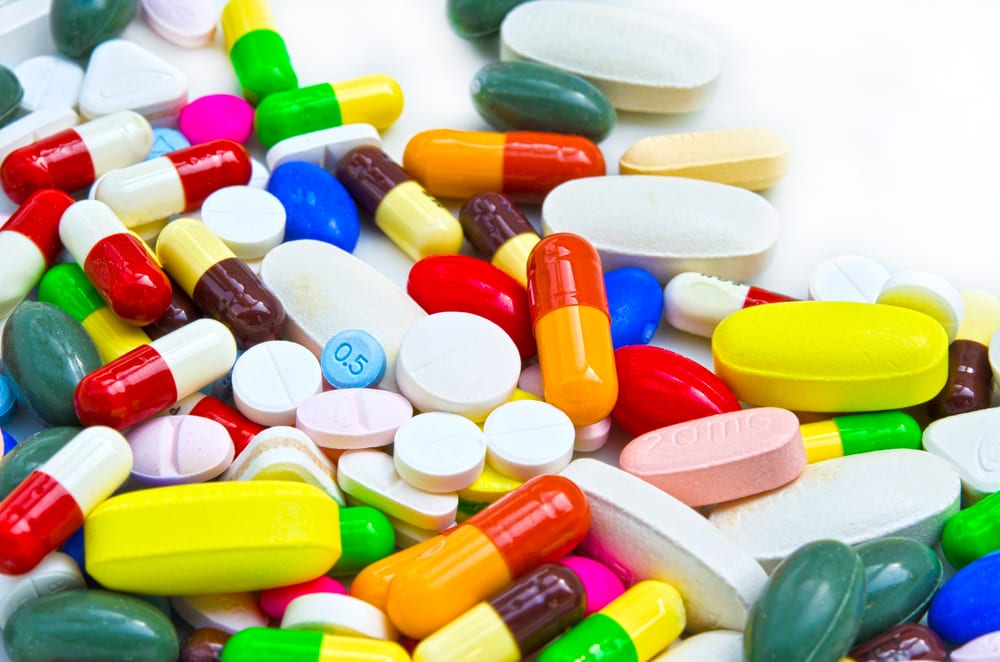
While the tools and methods of different vitamin manufacturers do vary, the basic process is roughly the same everywhere vitamins are made.
The following is an overview of the step by step process on how to manufacture vitamins.
How Are Vitamins Made?
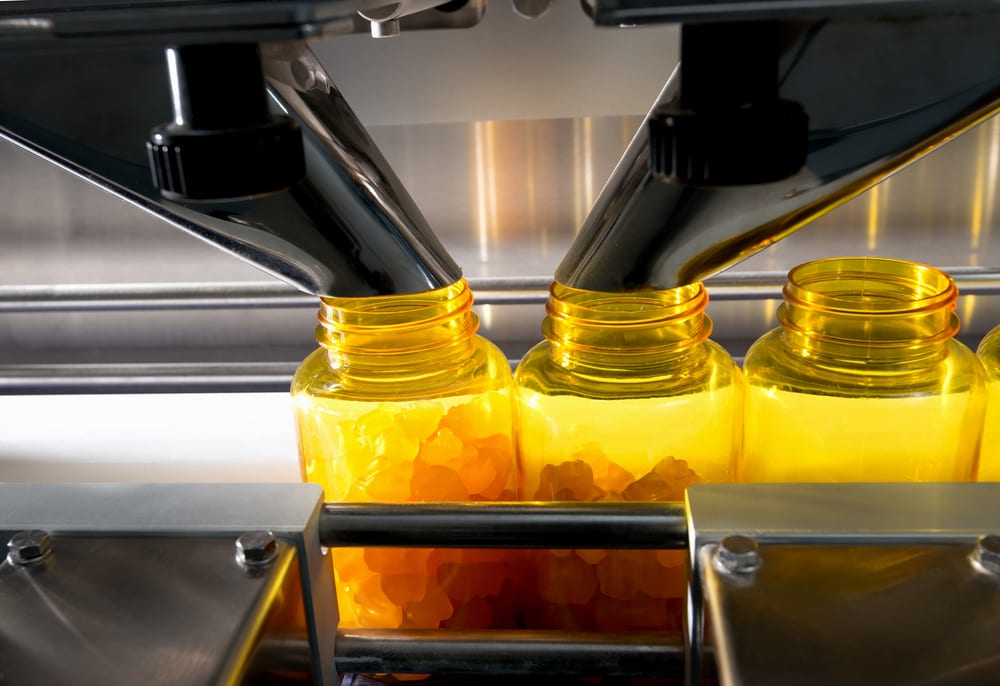
Different types of vitamins require different steps in the manufacturing process, and of course, the ingredients come from different sources.
Here are a few of the most common examples.
- Natural Source Vitamins – These are vitamins that deliver nutrients derived from real food products. They must be heavily processed before they can be made stable enough to put on the shelf.
- Nature-Identical/Synthetic – These supplements are entirely synthetic, made in a lab using molecular structures that are identical to their natural counterparts. Most of today’s vitamins fall into this category.
- Strictly Synthetic Supplements – These are created in a lab and are not identical to their natural counterparts. They have the same chemical components but vary in their molecular shape.
- Food Cultured – These are derived from cultured foods such as probiotics. They are usually grown in algae or yeast and yield high bioavailability.
- Food Based Supplements – A type of vitamin that is growing in popularity, food-based supplements are grown in a laboratory in a way that delivers natural nutrients without growing whole foods and extracting the nutrients from the food.
- Bacterial Fermentation – These are produced via the genetic manipulation of bacteria to produce nutritional byproducts.
Ingredient Selection
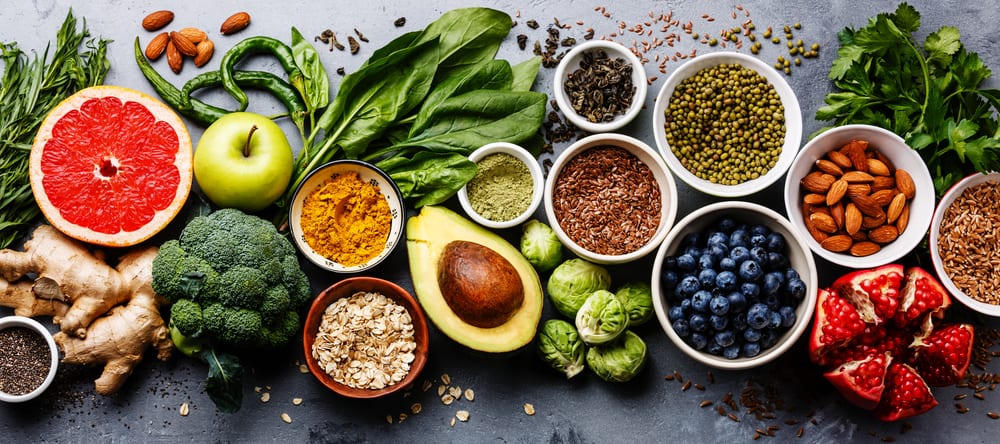
The first step is to determine what substances and compounds the intended vitamin product will need to be composed of.
This includes not only the essential vital substance itself. Common ingredients range from B6, Vitamin D, all the way to riboflavin.
It is also the substance or vehicle that binds the vitamin into a solid form. In the case of liquid vitamins, this is usually a soft gel capsule- or the product can come in liquid form.
Although, where dosing is a critical issue, liquid vitamins must be encapsulated.
Solid vitamin pills must utilize an internal binding agent in order for the pill to keep its shape and retain proper dosing.
Often times the character and percentage of binding agents used in vitamins will go a long way toward determining how it can be marketed, and whether or not it can be considered organic, for example.
Once the ingredients are measured out precisely, they are placed in a mechanical tumbler until they form a consistent blend.
After just fifteen minutes in the mixer, most formulas are ready to move on to the next stage.
Encapsulation
The powder is then injected into capsules or mold by their precise weight. This requires very precise machinery like the Bosch Encapsylon 1505 to accomplish on a large scale.
Then the dry capsules will be polished in order to remove any remaining powder on the surface of the pill.
Liquid capsules are sealed, sometimes with a vegetarian gel, to prevent leakage.
Bottling & Labelling
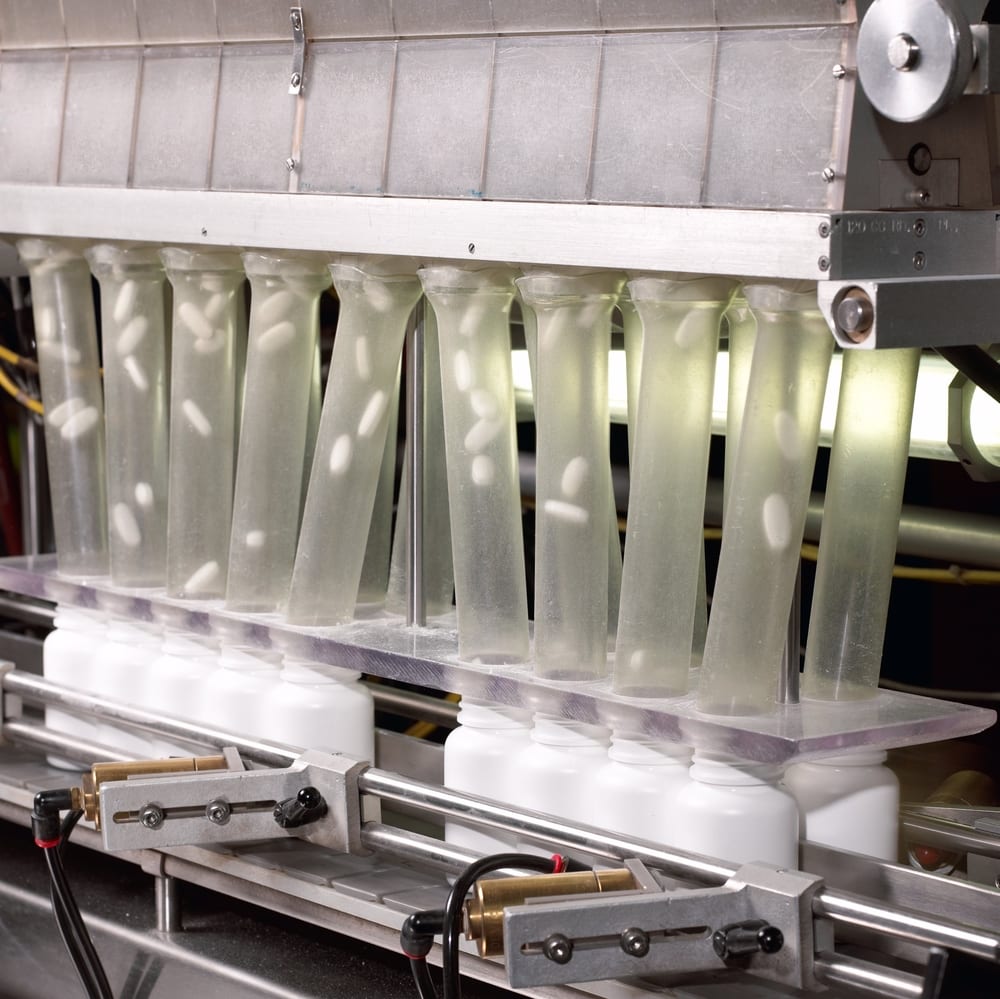
Solid dosage forms such as tablets, soft gels, and capsules are counted and dropped into a chute which leads to the intended container.
Each bottle then receives a sealed lid and is labeled according to its contents, recommended usage information, and the expiration date.
Large production facilities will use an advanced system known as an automatic storage and retrieval tower, (ASRT).
These eliminate virtually all human error in this complex and tedious part of the manufacturing process and are necessary for very large scale operations to function safely and accurately.
The products are then scanned for accuracy, loaded into boxes and prepared for shipping.
The products are then shipped to retailers where they meet the scrutiny of the public.
The Technical Side of the Vitamin Production Process
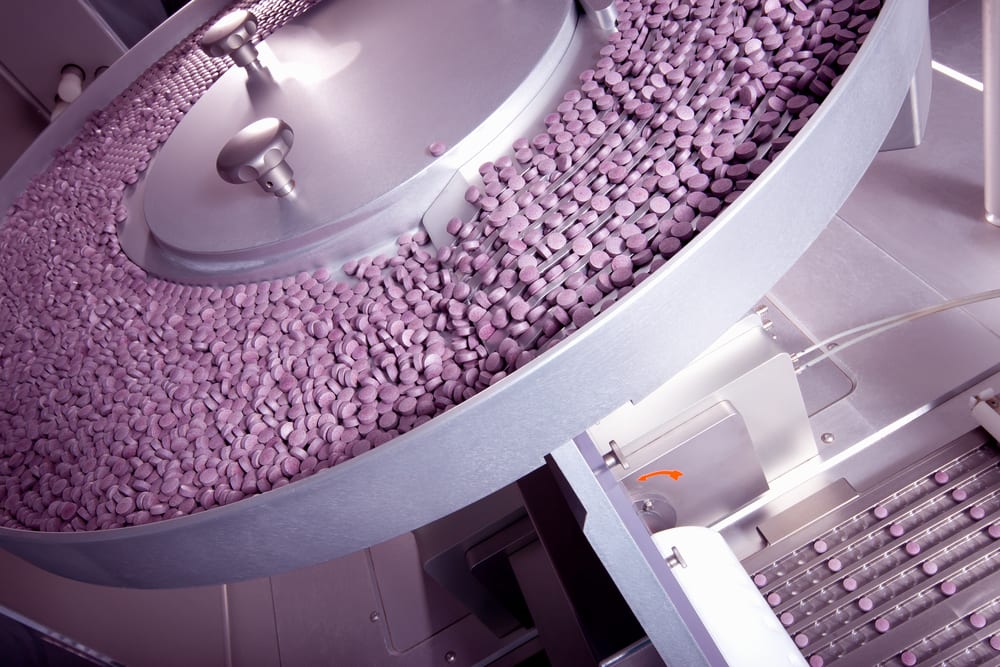
Finally, the manufacturing process described above is a highly simplified version of what goes on in a real vitamin manufacturing facility.
Before a producer can reliably turn out a viable product they must perform preliminary checks, pre-blending, wet granulation, weighing and mixing, calibrating, and maintaining equipment such as the encapsulating machine, tableting, coating, packaging, and of course- quality control.
These are precise measures that must be performed flawlessly if the manufacturing process is to be safe, legal, and produce a competitive product.
In the highly volatile world of vitamin and supplement manufacturing, innovation and discoveries are paramount to remaining ahead of the curve.
Another important aspect of the manufacturer of any substance for human consumption is complying with state and federal regulations.
The extremely complex nature of manufacturing is, to a large extent, the reason that so many new developers are have outsourced their manufacturing process.
Get Your Own Supplement Manufactured With SMP Nutra
SMP Nutra is capable of manufacturing any kind of nutraceutical formula, while we already have over 100 of our own stock products that you can have made for your brand, we also are capable of manufacturing custom formulas.


